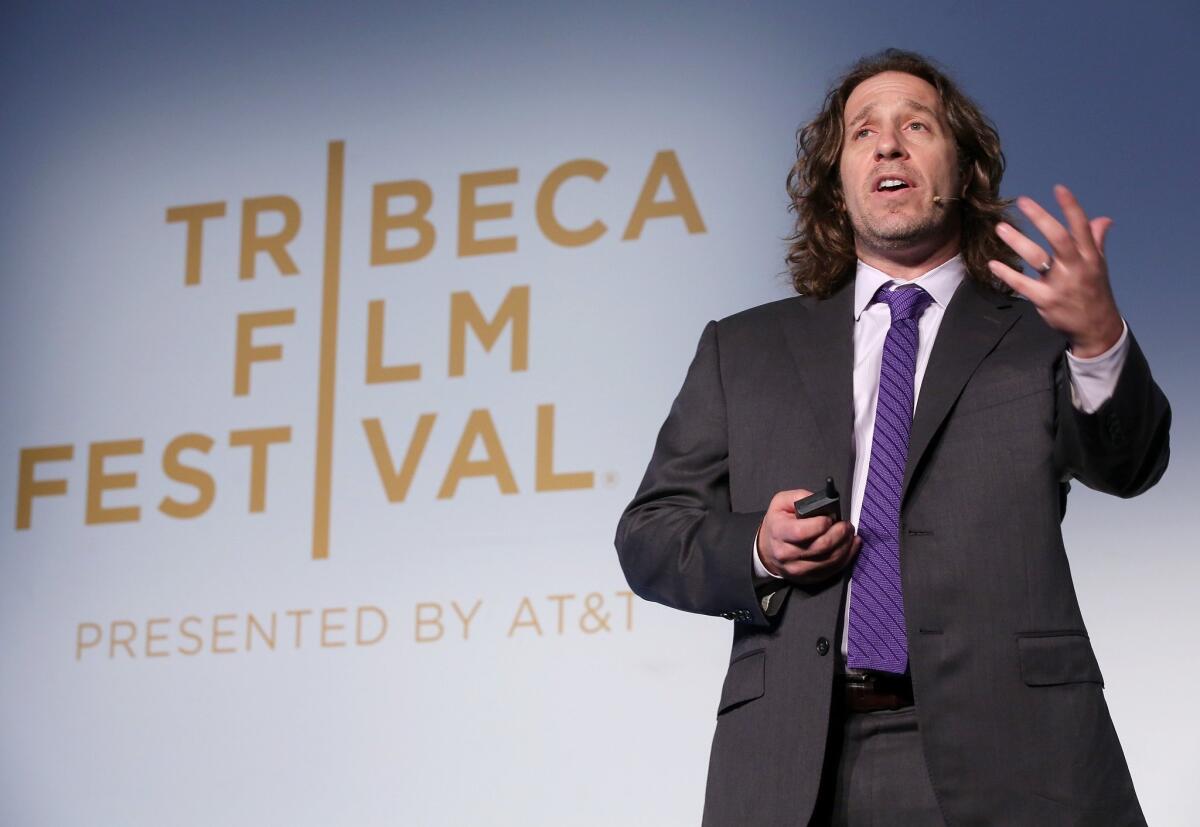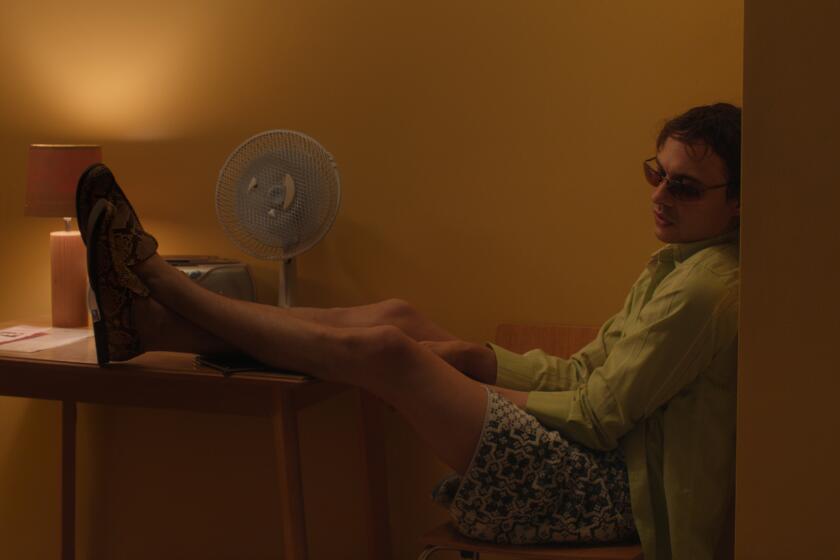VR Watch: Can Stanford’s approach work for film?

- Share via
There is a whole gang of players who want to define how we consume the coming wave of virtual-reality content: start-up tech firms like Jaunt and Oculus, traditional movie outfits like Fox, nontraditional movie outfits like MatterVR and Oculus Story Studio.
One of the entities that’s been on the fore of the movement is Stanford Virtual Human Interaction Lab, run by the respected Jeremy Bailenson. The outfit’s attitude toward Hollywood has been cautious, to say the least.
At the Tribeca Film Festival this week, the lab’s leader made his pitch to consumers and festgoers. One of the most influential of the VR personalities -- the story of how Mark Zuckerberg came to see him weeks before Zuckerberg would buy Oculus is the stuff of legend -- Bailenson has been practicing, and preaching, the VR gospel for years.
The applications of VR as conceived by the Stanford lab are numerous — a kind of drop-you-in-the-middle-of-the-action approach, in which the actions are everything from coaching football, as a short piece of content featuring a line-of-scrimmage-eye view of the Cardinal football team demonstrated (“the backup gets as many reps as the starter,” Bailenson says), to a candy-colored elephant-themed video game that, with its distractive tendencies, can be used for pain management. (Bailenson says it can be just as effective but far safer than traditional pharmacological methods.)
What he’s less sure about are its entertainment uses.
“How do you tell someone a story that you’re in the middle of? And what if the big reveal happens and you’re looking in the wrong place?” he said, citing two of VR creator’s well-known challenges. Then he ran through the solutions, like sound guides, none of which he thought would be helpful.
Bailenson is an all-cylinders kind of guy -- a hyper-verbal multi-tasker, but more so -- quick to answer, knowledgeable of response, confident of opinion.
Earlier at a presentation, he told the audience that VR’s main problem for movies and TV is its you-are-there-ness. Most of us didn’t want to be thrust into our cinema, he said; traditional filmic entertainment didn’t just hold events at a remove because it had to but because it’s better that way. “I think about the trash compactor scene in ‘Star Wars,’” he said. “I don’t know if I want to be there. I don’t know if I want to be there … smelling the garbage.”
This has become a familiar concern in VR, that a drama would become too heightened or horror would start to feel like a snuff film. Ironically, it has made some of the most knowledgeable people about the form most skeptical about its Hollywood implications.
Instead, Bailenson said in the interview, he can imagine VR being used in highly specific cinematic circumstances.
“I can see stopping a movie for two minutes and if you want a deeper experience, you go in, and if you don’t, you keep moving,” he said. “But integrating it into the film I don’t think will work.”
That hasn’t stopped other entities from trying. There are, after all, numerous possible solutions to these problems; a person who is looking the other way when a key narrative moment happens, for instance, can go back to the point he missed, or the story can be structured so that a user would still have a satisfying experience looking elsewhere.
There’s reason to think we’re facing less of an either-or that the will-it-catch-on-for-entertainment questions imply (that is, we’re either watching entertainment on a traditional rectangular frame or we’re on a Choose your Own Adventure deep dive) and something more assimilated. A few floors up from Stanford’s demonstration at Tribeca, Oculus Story Studio is unveiling its new version of “Lost,” the animated episodic short that finds you mingling amid fireflies on a distant planet as large foreign objects begin to descend.
The initial experience, revealed at Sundance, has just been upgraded, and in the new version unveiled at Tribeca on Thursday, you can now interact with another user -- a firefly to your side, focusing on and influencing its movements as you take a break from the story. It’s a far cry from a multiplayer video game (as it probably should be), but there’s a feeling in this one that you’re part of something more participatory.
Outside the booth, several Oculus executives — many of whom worked for years at Pixar — were talking about the idea of “choice” in storytelling. Because VR operates at 360 degrees, a piece of content can be structured so that a user chooses one path or another, essentially following various through lines through the narrative (think of what the NFL has for different camera views online, or what a “Grey’s Anatomy” could have for different characters in an episode).
Stanford is showing another piece of VR content at Tribeca, a more visceral one, in which a user walks a plank. Despite its cinematic overtones -- “The Goonies” comes to mind — a piece like this doesn’t automatically feel like a traditional film. But it could one day. How much better would “Goonies” have been if you could be right there on the pirate ship with One-Eyed Willy?
Twitter: @ZeitchikLAT
More to Read
Only good movies
Get the Indie Focus newsletter, Mark Olsen's weekly guide to the world of cinema.
You may occasionally receive promotional content from the Los Angeles Times.











